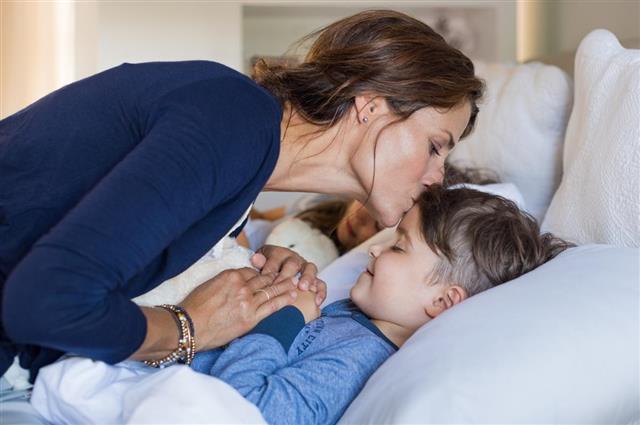
Even with the Uniform Child Custody Act, it is difficult to know what type of child custody you could get. To help you wisely choose, here is a brief overview on the different types of child custody.
Going through a divorce is often more stressful than a failing marriage. Add to that, the anxiety over your child’s welfare, and the stress levels shoot up to the sky. While there is little you can do about the situation, it is immensely helpful to know the answers for issues related to child custody. One of the important issues of child custody is the type of child custody you will be granted by the family court. Practically each state has different custody laws, which makes it all the more difficult if you and your spouse (or ex-spouse, in case the divorce is final) reside or will reside in different states.
Child Custody Types in Terms of Parental Involvement
Sole Custody: When full custody rights are granted to only one parent, it is known as sole child custody or full custody. Sole custody is rarely granted nowadays. Instances when sole custody is granted are as follows:
- Substantial proof is provided that a parent is unfit.
- A parent is known to have indulged in abuse, child neglect or is unable to provide proper child care.
- A parent has been the primary caregiver of the child for a long time.
- Absence of a strong parent-child bond or lack of parent involvement in the child’s life.
- A parent is prone to drug or alcohol abuse.
- The new partner or spouse of a parent is proved to be unfit.
- Granting custody to a parent is not in the child’s best interest.
However, even in such cases, the non-custodial parent can be granted visitation rights.
Joint Custody: This involves granting of equal child custody rights to both parents and is also known as shared parenting or shared child custody. The parents are ordered to prepare a schedule with mutual consent or where this is not possible, ask the court to make one (usually called the parenting plan or the parenting agreement). Some things that are taken into consideration for this decision are:
- Ability of parents to cooperate on issues related to their child
- Active involvement of parents in the child’s life
- Capability of both parents in providing proper child care
Most family courts favor joint custody rights with the belief that it is beneficial for a child to have good relationship with both parents. It reduces the trauma of being separated from one parent in the case of a child, and reduces the pain of being separated from a child in case of a parent.
Temporary Custody: When divorce proceedings are ongoing, a family court can give a ruling on child custody, if the parents cannot come to an out-of-court agreement. A point to be noted here is that, the ruling given as ‘temporary custody’ is usually upheld as permanent after the divorce has been finalized. The reasons behind this are as follows:
- Changing the terms of child custody, will disturb a child’s routine and can adversely affect the child.
- There is a lack of the non-custodial parent’s involvement in the child’s life.
- Both parents are satisfied with the current child custody arrangement.
If you want to change the temporary child custody, you will need the backing of valid arguments on your behalf. The best way to avoid such a situation is by settling for appropriate terms in the beginning and maintaining a good bonding with your child despite the differences with your spouse.
Third-Party or Non-Parent Custody: A child custody may be granted to someone other than the natural parents; usually grandparents, close relatives, friends or a person with whom the child has been staying for a long time. Though the first preference is given to either one of the natural parents, third-party custody (or non-parent custody) can be granted due to any one of the reasons:
- Death of a parent occurs while the survivor is proven to be an unfit parent.
- Both parents will be unavailable for an extended period of time.
- Both parents are unfit of providing proper child care.
- A child has been neglected by both parents and left with a third-party for a long period of time.
Child Custody in Terms of Child Welfare
Physical Custody: Alternatively known as residential child custody, this refers to the living arrangement of a child. It also involves the normal care and facilities needed daily by a child. The parent with whom a child lives is known as the custodial parent while the other parent is known as the non-custodial parent.
Legal Child Custody: This involves the decision-making powers related to a child. The decisions related to discipline, education, health care and general upbringing of a child are covered by the terms mentioned in the ruling of a ‘legal child custody’. It includes taking decisions for moral and emotional well-being of a child, religious development, choice of extracurricular activities, etc.
Bird’s Nest Custody: In this type of child custody, the child resides in a family home while the parents take turns to move in and out of the house, depending on the parenting plan or schedule. This is mostly done when a child has lived in a house for a long time and the parents can afford to have, or already own, alternative residences. Bird’s nest custody avoids the cost of maintaining two homes for a child, reduces the disruption of a child’s schedule and gives the child a sense of permanence and stability.
Split Child Custody: When a couple has more than one child, a court may split the children among the parents and ask them to alternate the care of the child (or children) after a specific period of time. Most court rulings try to avoid giving such type of child custody so that a child is not isolated from his/her siblings. Besides, separating children may interfere with their bonding with siblings and also with the non-custodial parent negatively. But a split child custody becomes necessary if:
- Both parents are unable to provide for all the children at one time.
- A child is disabled or has special needs.
- The children do not mix well with each other.
Whatever may be the case, parents involved in a split child custody are required to live near each other and take full responsibility of the child/children under their care.
Child Custody Given as Combinations
Joint Physical Custody: When the terms of a child custody ruling grants both parents equal rights to spend time with the child, it is known as ‘joint physical custody’ or shared physical custody. Some conditions for this type of custody are:
- The schedule and routine of a child is not unduly disturbed.
- Both parents have houses near each other.
- The child lives with one parent and spends an equal amount of time with the other parent during sleepover, weekends and/or holidays.
Sole Physical Custody: As with sole custody, ‘sole physical custody’ grants one parent all the rights of child care as far as the living arrangement and day-to-day care of the child is concerned. The custodial parent becomes responsible for the normal upbringing of the child while the non-custodial parent can be granted visitation rights and legal custody rights.
Primary Physical Custody: When a child custody ruling involves a child spending equal to, or less than, 40% of time with one parent, while living with the other parent for rest of the time, it is known as ‘primary care custody’. The parent with whom a child spends the maximum amount of time is said to be the primary care parent. This type of child custody is granted when:
- A parent lives in another state.
- A parent has been the primary caregiver for a long time.
- A child is quite attached to the extended family or friends of a parent.
- A child is more comfortable in the place where a parent lives.
- A child’s schedule will not be disturbed by living with a parent.
- A parent is unable or unwilling to take the responsibility of regular upbringing of the child.
Visitation rights can be used by the non-custodial parent and he/she can also have joint legal custody.
Joint Legal Custody: The terms of this kind of child custody grants both parents equal decision-making powers. That is, both parents have equal say in decisions related to the life of their child. The parents have to get the approval of each other before deciding anything for the child and if they cannot come to an agreement, a parent can ask a court to give a ruling on that issue. A point to note here is that parents having joint physical custody more often also share the rights of a legal custody but those with joint legal custody need not have rights of joint physical custody.
Sole Legal Custody: A child custody ruling which gives all the rights of taking major decisions for a child to only one parent, is known as a ‘sole legal custody’. Here the custodial parent does not have to wait for input from the non-custodial parent but the non-custodial parent has to consult (and get the approval of) the custodial parent for any major decision related to the child. However, emergency decisions like urgent medical treatment (especially during the parenting time of a non-custodial parent) can be taken without the custodial parent. Still, the custodial parent will have to be informed as soon as possible.
Apart from the reasons given for sole custody, sole legal custody can be granted because:
- A parent is unfit to make right decisions regarding the well-being of a child.
- A parent is mostly absent or unavailable.
- Parents are unwilling to communicate and/or refuse to agree on decisions related to the child.
This type of child custody is rarely granted and can be reviewed when the situation warrants a change.
When filing for child custody, it is very important to keep your child as the first priority. No matter what differences you have with your spouse/ex-spouse, do not let it affect your child wrongly. Remember that your child has more value than your dislike or hatred. Don’t hesitate to take the help of the law to protect your child from potential harm but at the same time, try to come to an agreement as peacefully as possible.















